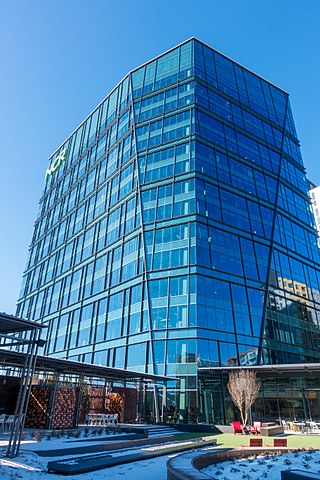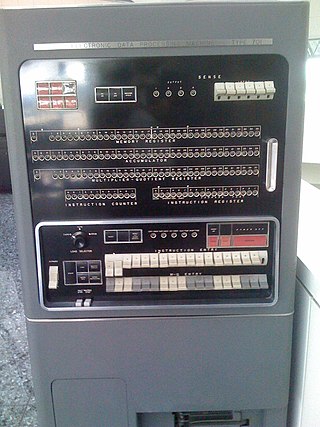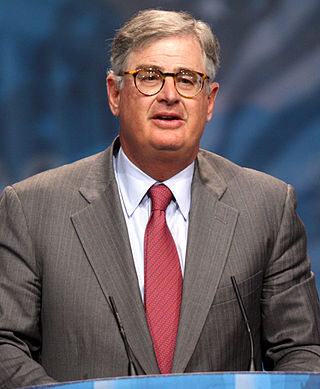 IBM Think sign | |
| Product | |
|---|---|
| Release date(s) | 1911 |
"Think" (rendered as THINK) is a slogan associated with the American multinational technology company IBM.
 IBM Think sign | |
| Product | |
|---|---|
| Release date(s) | 1911 |
"Think" (rendered as THINK) is a slogan associated with the American multinational technology company IBM.
The "THINK" slogan was first used by Thomas J. Watson in December 1911, while managing the sales and advertising departments at the National Cash Register Company. [1] At an uninspiring sales meeting, Watson interrupted, saying "The trouble with every one of us is that we don't think enough. We don't get paid for working with our feet — we get paid for working with our heads". Watson then wrote THINK on the easel. [2]
Asked later what he meant by the slogan, Watson replied, "By THINK I mean take everything into consideration. I refuse to make the sign more specific. If a man just sees THINK, he'll find out what I mean. We're not interested in a logic course." [3]
In 1914, Watson took the slogan with him to the Computing-Tabulating-Recording Company (CTR) and its subsidiaries, all of which later became IBM. [4] [5] [6] [7] International Time Recording, one of the subsidiaries, published a magazine for employees and customers, named Time, which, in 1935, IBM would rename to THINK. [8] [9] IBM continues to use the slogan. [10] THINK is also an IBM trademark; IBM named its laptop computers ThinkPads and named a line of business-oriented desktop computers ThinkCentre.
Since 2018, IBM's main conference is called IBM Think. [11]
The Apple slogan "Think different," meaning "Think differently", first used in 1997, has been widely taken as a response to IBM's THINK. [12] [13] [14]

A punched card is a piece of card stock that stores digital data using punched holes. Punched cards were once common in data processing and the control of automated machines.

Thomas John Watson Sr. was an American businessman who was the chairman and CEO of IBM. He oversaw the company's growth into an international force from 1914 to 1956. Watson developed IBM's management style and corporate culture from John Henry Patterson's training at NCR. He turned the company into a highly effective selling organization, based largely on punched card tabulating machines.

NCR Voyix Corporation, previously known as NCR Corporation and National Cash Register, is an American software, consulting and technology company providing several professional services and electronic products. It manufactured self-service kiosks, point-of-sale terminals, automated teller machines, check processing systems, and barcode scanners.

The IBM 7030, also known as Stretch, was IBM's first transistorized supercomputer. It was the fastest computer in the world from 1961 until the first CDC 6600 became operational in 1964.

The IBM 701 Electronic Data Processing Machine, known as the Defense Calculator while in development, was IBM’s first commercial scientific computer and its first series production mainframe computer, which was announced to the public on May 21, 1952. It was designed and developed by Jerrier Haddad and Nathaniel Rochester and was based on the IAS machine at Princeton.

Samuel J. "Sam" Palmisano is a former president and the eighth chief executive officer of IBM until January 2012. He also served as chairman of the company until October 1, 2012.

Starting at the end of the nineteenth century, well before the advent of electronic computers, data processing was performed using electromechanical machines collectively referred to as unit record equipment, electric accounting machines (EAM) or tabulating machines. Unit record machines came to be as ubiquitous in industry and government in the first two-thirds of the twentieth century as computers became in the last third. They allowed large volume, sophisticated data-processing tasks to be accomplished before electronic computers were invented and while they were still in their infancy. This data processing was accomplished by processing punched cards through various unit record machines in a carefully choreographed progression. This progression, or flow, from machine to machine was often planned and documented with detailed flowcharts that used standardized symbols for documents and the various machine functions. All but the earliest machines had high-speed mechanical feeders to process cards at rates from around 100 to 2,000 per minute, sensing punched holes with mechanical, electrical, or, later, optical sensors. The operation of many machines was directed by the use of a removable plugboard, control panel, or connection box. Initially all machines were manual or electromechanical. The first use of an electronic component was in 1937 when a photocell was used in a Social Security bill-feed machine. Electronic components were used on other machines beginning in the late 1940s.

A time clock, sometimes known as a clock card machine, punch clock, or time recorder, is a device that records start and end times for hourly employees at a place of business.

Lenovo Group Limited, trading as Lenovo, is a Chinese multinational technology company specializing in designing, manufacturing, and marketing consumer electronics, personal computers, software, business solutions, and related services. Products manufactured by the company include desktop computers, laptops, tablet computers, smartphones, workstations, servers, supercomputers, data storage devices, IT management software, and smart televisions. Its best-known brands include its ThinkPad business line of laptop computers, the IdeaPad, Yoga, LOQ, and Legion consumer lines of laptop computers, and the IdeaCentre, LOQ, Legion, and ThinkCentre lines of desktop computers. As of 2024, Lenovo is the world's largest personal computer vendor by unit sales.

Thomas John Watson Jr. was an American businessman, diplomat, Army Air Forces pilot, and philanthropist. The son of IBM Corporation founder Thomas J. Watson, he was the second IBM president (1952–71), the 11th national president of the Boy Scouts of America (1964–68), and the 16th United States Ambassador to the Soviet Union (1979–81). He received many honors during his lifetime, including being awarded the Presidential Medal of Freedom by Lyndon B. Johnson in 1964. Fortune called him "the greatest capitalist in history" and Time listed him as one of "100 most influential people of the 20th century".

Dehomag was a German subsidiary of IBM and later a standalone company with a monopoly in the German market before and during World War II. The word was a syllabic abbreviation for Deutsche Hollerith-Maschinen GmbH. Hollerith refers to the German-American inventor of the technology of punched cards, Herman Hollerith. In April 1949 the company name was changed to IBM Deutschland.

The Thomas J. Watson Research Center is the headquarters for IBM Research. The center comprises three sites, with its main laboratory in Yorktown Heights, New York, U.S., 38 miles (61 km) north of New York City, New York and with facilities in Cambridge, Massachusetts and Albany, New York.

The Computing-Tabulating-Recording Company (CTR) was a holding company of manufacturers of record-keeping and measuring systems; it was subsequently known as IBM.
International Business Machines (IBM) is a multinational corporation specializing in computer technology and information technology consulting. Headquartered in Armonk, New York, the company originated from the amalgamation of various enterprises dedicated to automating routine business transactions, notably pioneering punched card-based data tabulating machines and time clocks. In 1911, these entities were unified under the umbrella of the Computing-Tabulating-Recording Company (CTR).

IBM and the Holocaust: The Strategic Alliance between Nazi Germany and America's Most Powerful Corporation is a book by investigative journalist and historian Edwin Black which documents the strategic technology services rendered by US-based multinational corporation International Business Machines (IBM) and its German and other European subsidiaries for the government of Adolf Hitler from the beginning of the Third Reich through to the last day of the regime, at the end of World War II when the US and Germany were at war with each other.
Fear, uncertainty, and doubt (FUD) is a manipulative propaganda tactic used in sales, marketing, public relations, politics, polling, and cults. FUD is generally a strategy to influence perception by disseminating negative and dubious or false information, and is a manifestation of the appeal to fear.

International Business Machines Corporation, nicknamed Big Blue, is an American multinational technology company headquartered in Armonk, New York and present in over 175 countries. IBM is the largest industrial research organization in the world, with 19 research facilities across a dozen countries, having held the record for most annual U.S. patents generated by a business for 29 consecutive years from 1993 to 2021.
Louis Howell LaMotte Jr. (1896–1984) was a business executive. Known by the nickname of "Red," LaMotte served in senior leadership positions at IBM during a 39-year career. During the 1950s, he led a task force overseeing IBM's initiative to develop computers for the U.S. government and commercial data processing. At his 1973 retirement dinner, Thomas Watson Jr., recognized LaMotte as one of his key associates. IBM has since recognized LaMotte as one of 50 Builders who grew IBM's operations, infrastructure, and identity.